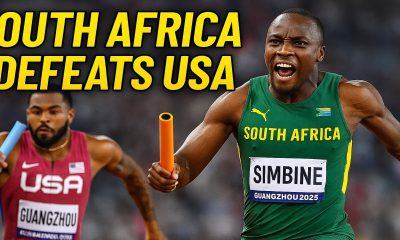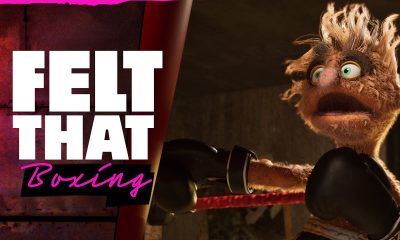NIL
NCAA agrees to lift name, image and likeness recruitment ban
The agreement, if approved by the court, will allow college athletes to negotiate compensation for name, image and likeness deals before enrolling in a specific school, and it will allow third parties to negotiate name, image and likeness deals during recruitment windows. In a statement, Skrmetti said “With a multi-billion-dollar entertainment industry rising from the […]
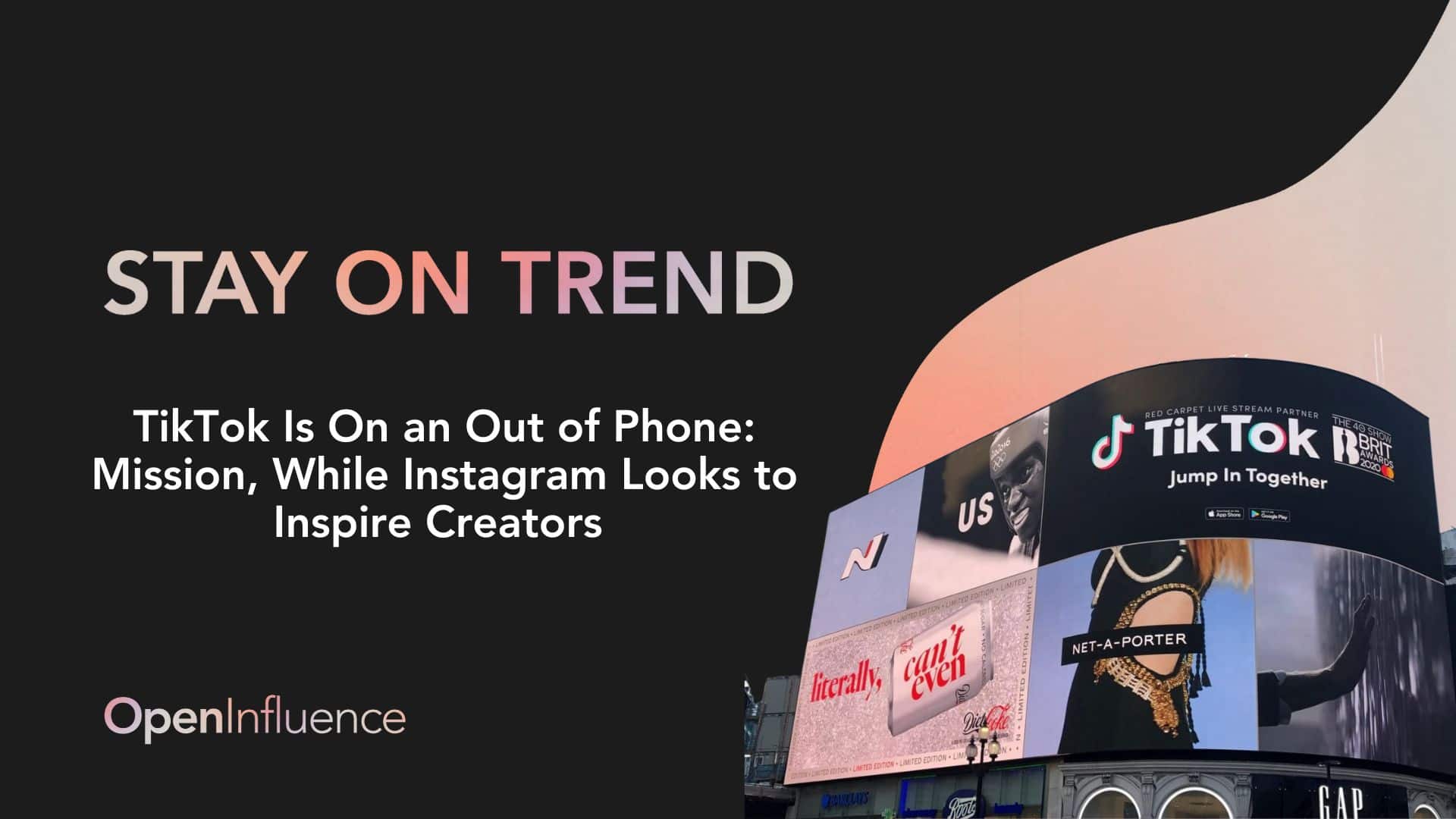

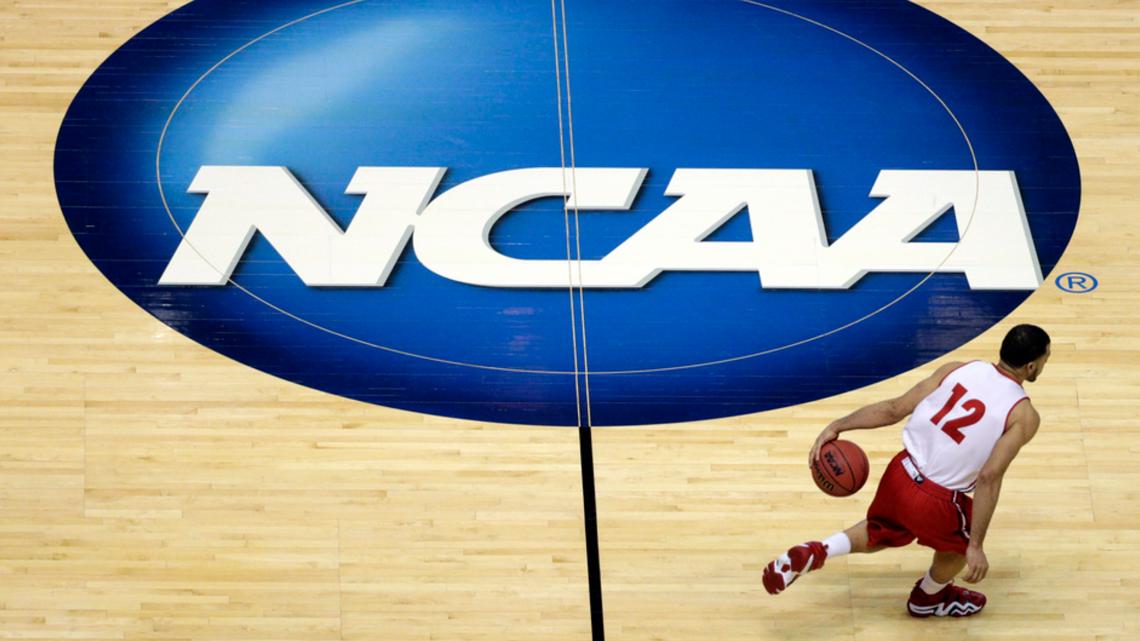
The agreement, if approved by the court, will allow college athletes to negotiate compensation for name, image and likeness deals before enrolling in a specific school, and it will allow third parties to negotiate name, image and likeness deals during recruitment windows.
In a statement, Skrmetti said “With a multi-billion-dollar entertainment industry rising from the foundation of college sports, the kids who make it all happen should not be the only people denied an opportunity to prosper.”
The NCAA will also have to publicize any proposed name, image and likeness changes for the next five years and meet with states before the proposals can take effect.
Skrmetti and a handful of attorneys general had sued the NCAA over its name, image and likeness recruiting ban, arguing the rule violated antitrust laws.
Attorneys general in New York, Virginia, Florida and the District of Columbia were part of the coalition that sued over the policy.
NASHVILLE, Tenn. — The NCAA will abandon a rule that stopped athletes from negotiating potentially lucrative name, image and likeness deals before enrolling in a specific college, Tennessee Attorney General Jonathan Skrmetti said Monday as he announced a settlement in a lawsuit over the policy.
The proposed settlement must still be approved by a federal judge.
The judge handling the case had previously ordered the NCAA to temporarily halt the policy while the case played out.
An NCAA spokesperson said the proposed settlement “underscores our support for student-athletes benefiting from their NIL and our commitment to provide increased benefits to student-athletes at every stage in their collegiate experience, creating a sustainable model for the future of college sports.”
The agreement, if approved, will allow college athletes to negotiate compensation for name, image and likeness deals before enrolling in a specific school.
Continue Reading
NIL
Paul Finebaum makes prediction on House Settlement, how it will impact future of college sports
Paul Finebaum joined ESPN’s SportsCenter to dish on the latest regarding the NCAA House Settlement after an agreement was reached this week. He believes college athletics as we know it will go the way of the dinosaur, and that might not be the best thing to move each sport into the future. “I couldn’t help but think […]
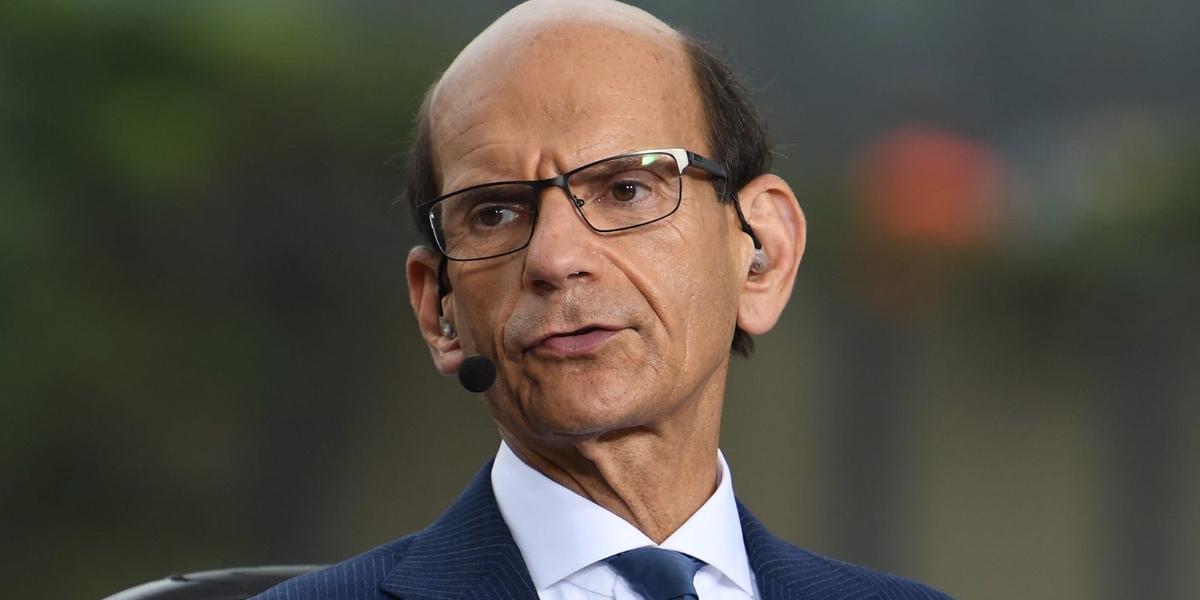
Paul Finebaum joined ESPN’s SportsCenter to dish on the latest regarding the NCAA House Settlement after an agreement was reached this week. He believes college athletics as we know it will go the way of the dinosaur, and that might not be the best thing to move each sport into the future.
“I couldn’t help but think back about 10 years ago, when Mark Emmert, then the President of the NCAA, essentially said college athletes will be paid over my dead body. He’s still alive, but the NCAA is dead,” Finebaum proclaimed. “It may still be in existence. We’re still having tournaments, such as the Women’s World Series and the Men’s Baseball Tournament, but the NCAA, as we know it, is gone. They literally have no jurisdiction whatsoever, other than to be tournament directors.
“This was supposed to level the playing field. Everybody pays the same into the kitty and then divides it up, but it will do anything. The big will get bigger, and the small schools will simply slip away. Other than maybe in in basketball-only conferences that can use all that money for basketball, as opposed to like, Alabama and Georgia and Ohio State, where they have to split up $20.5 million.”
While sports like football would likely be able to survive a nuclear blast, Finebaum thinks some rising competitions, like softball and women’s sports as a whole, are facing an uphill battle. The ESPN analyst was blunt in his assessment, worrying about what comes next.
“It will look a little bit like the NCAA basketball tournament this year, where the mid-majors, where we had all those great upsets, the Butlers of the past and so many incredible stories, the Valpos — they’re going to be gone. It’s going to be the big schools on top, the rest of college athletics is going to suffer,” Finebaum said, regarding what college athletics will look like over the next decade.
“… The real casualty of all this, I believe, is going to be the one part of college athletics that has grown so much. We watched the Women’s World Series last night, a million dollar pitcher, by the way, for Texas Tech. Women’s sports, I think, are going to suffer from this. If you’re one of these Ohio States or Alabamas, and you’re dividing up $20.5 million, you know where most of it’s going, it’s going to football. That’s really a major casualty.
“… College Athletics did this to themselves. They’re not really suffering for it, because it’s a billion dollar industry, but it’s going to be very uneven in the future. I think, at some point, fans are going to start tuning out. There’s such an existential threat to what we grew up loving, and we still do. It’s not going to be the same anymore.”
All told, we’ll have to wait and see if Paul Finebaum doom-and-gloom prediction comes true. Regardless, college athletics as a whole is changing right before our eyes, and it’s anyone’s guess as to what the future holds.
NIL
IU basketball leans on vast NIL resources in rebuild amidst changed market
To build long-term stability, IU coach Darian DeVries wants to ‘simplify’ the process Indiana basketball coach Darian DeFries describes how he see building long-term stability. BLOOMINGTON — Indiana basketball coach Darian DeVries basically had to start from scratch when putting together his roster for the 2025-26 season. The lone holdover from Mike Woodson’s final year as […]

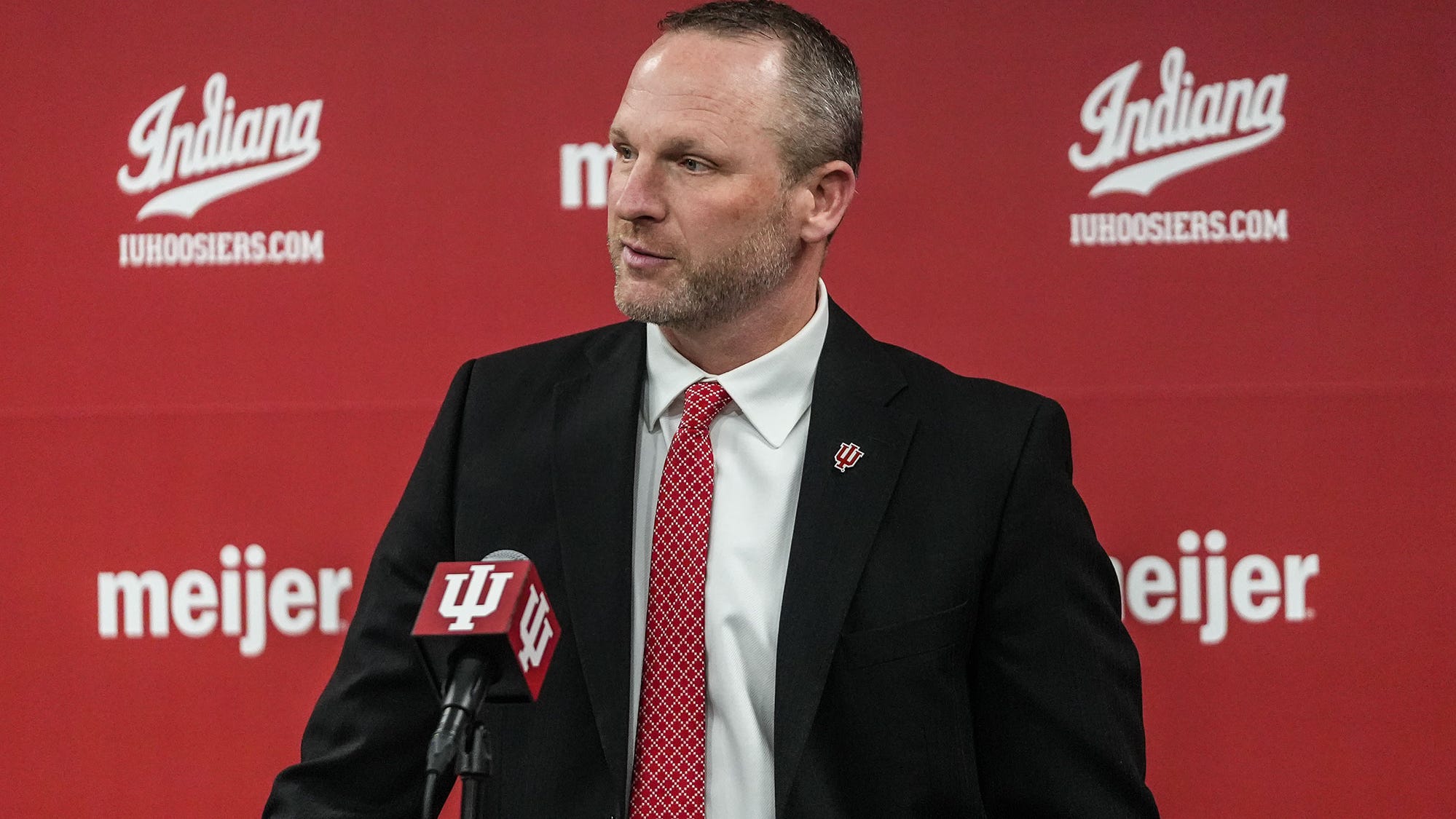
To build long-term stability, IU coach Darian DeVries wants to ‘simplify’ the process
Indiana basketball coach Darian DeFries describes how he see building long-term stability.
BLOOMINGTON — Indiana basketball coach Darian DeVries basically had to start from scratch when putting together his roster for the 2025-26 season.
The lone holdover from Mike Woodson’s final year as coach was a 2025 signee (Trent Sisley) who hadn’t even arrived on campus yet.
DeVries had plenty of experience with the process, having navigated similar rebuilds at Drake and West Virginia. Still, there was a noticeable difference this time around thanks to the House v. NCAA case that was finalized on Friday night.
The settlement in the case will usher in a new era of revenue sharing, along with an NIL clearinghouse that will vet deals. There was a rush to sign players to front-loaded NIL deals that weren’t subject to review before a final approval hearing back in April and that created a much different market than the one DeVries face during those previous rebuilds.
“I think the biggest thing, as everybody found out quickly, was the NIL piece jumped dramatically in terms of what rosters we’re going to take to kind of put together,” DeVries said at a recent booster event. “And thankfully, we’re at a place that was very supportive, and then have some great donors in place and people in place to help facilitate that.”
Those resources helped DeVries lock down 10 transfers, including three players (Tucker DeVries, Lamar Wilkerson and Reed Bailey) ranked in the top 100, per 247 Sports.
“We were able to adjust on the fly as we were putting together a roster,” DeVries said. “And then anytime you’re in the portal, those things can get a little tricky, as you’re trying to put that many guys on a roster at one time.”
It’s nothing new for Indiana — Woodson had a lucrative warchest after the 2023-24 season that helped him land some of the highest-rated players in the country. The school is also expected to be near the top of the conference in how much money from its anticipated $20.5 revenue-sharing budget it dedicates to men’s hoops.
“Just like last year, we’ll be highly competitive,” Indiana athletic director Scott Dolson said back in March. “Not just in our league, but nationally.”
That commitment came at a crucial time with IU facing stiff competition from teams across the country for top talent. Five other teams in the Big Ten (Iowa, Maryland, Minnesota, USC, and Washington) signed eight or more transfers.
Michael Niziolek is the Indiana beat reporter for The Bloomington Herald-Times. You can follow him on X @michaelniziolek and read all his coverage by clicking here.
NIL
Colleges across US can pay athletes directly in landmark NIL agreement
Schools across the United States can now directly pay college athletes under a landmark settlement approved by a federal judge on Friday, June 6. The agreement, valued at $2.8 billion, established a 10-year revenue-sharing model in college sports, enabling athletic departments to distribute approximately $20.5 million in name, image and likeness (NIL) revenue to athletes […]
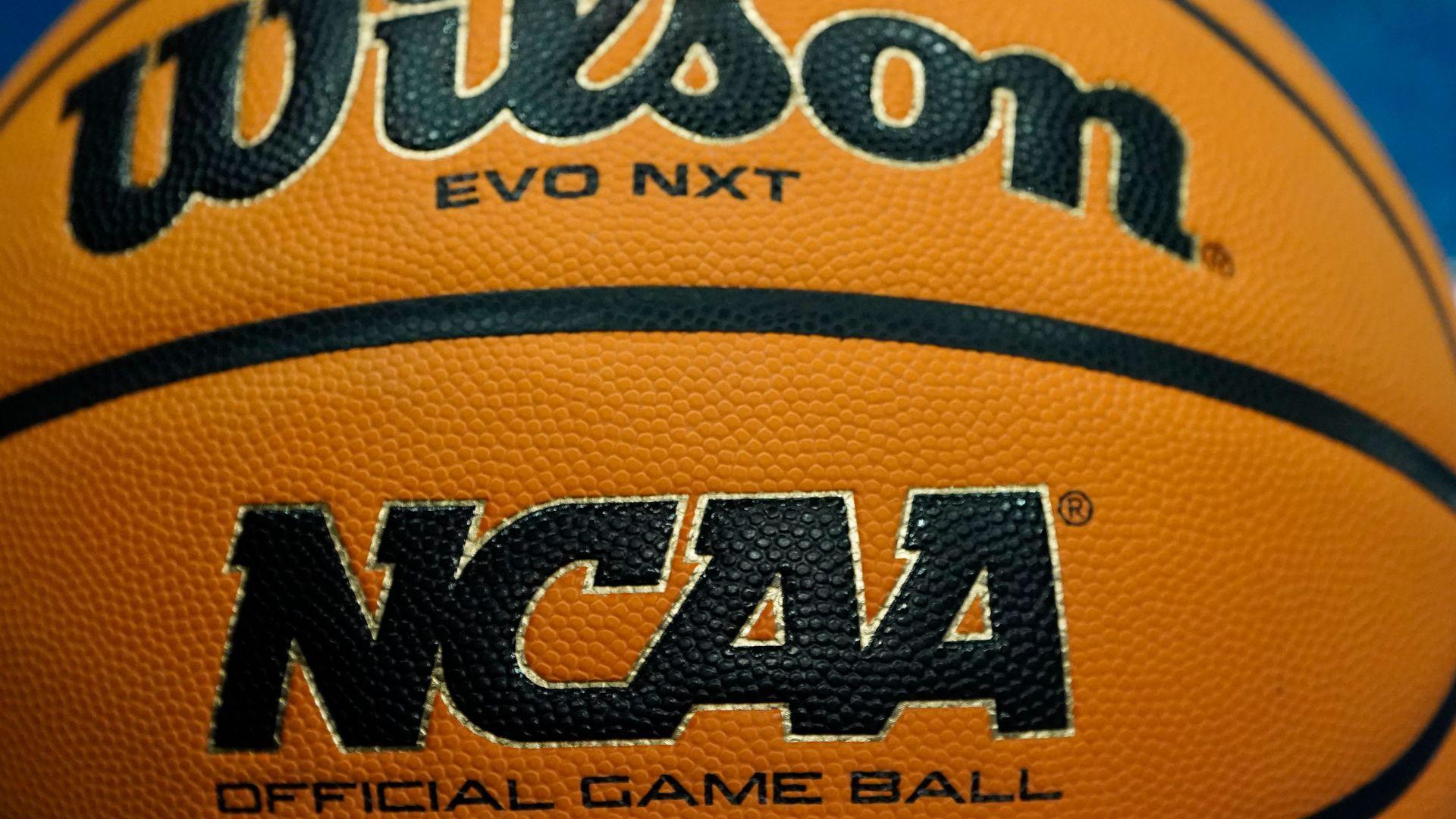
Schools across the United States can now directly pay college athletes under a landmark settlement approved by a federal judge on Friday, June 6. The agreement, valued at $2.8 billion, established a 10-year revenue-sharing model in college sports, enabling athletic departments to distribute approximately $20.5 million in name, image and likeness (NIL) revenue to athletes during the 2025-26 season.
Additionally, the NCAA will pay nearly $2.8 billion in damages to Division I athletes who were previously prohibited from signing NIL deals, with compensation dating back to 2016. U.S. District Judge Claudia Wilken initially declined to approve the settlement due to concerns over scholarship limits, which would have caused thousands of athletes to lose spots on Division I teams.
After revisions, implementation of these limits may now be delayed for several years, allowing schools more time to adapt. The changes will also allow colleges to offer more full or partial athletic scholarships, reshaping the financial and competitive aspects of college sports.
Participation in the revenue-sharing model is voluntary, and institutions that choose to take part are not required to pay the full $20.5 million. The Ivy League, for example, opted out of the settlement, choosing to continue its longstanding amateurism rules for student athletes. The league recently won an antitrust lawsuit upholding its policy against offering athletic scholarships.
The settlement builds on legal challenges that have reshaped NCAA regulations in recent years. In June 2021, the U.S. Supreme Court unanimously ruled against the NCAA in a landmark decision, asserting that college athletics should be treated more as a commercial enterprise than as an education-focused activity. This ruling triggered a wave of lawsuits and scrutiny that have greatly disrupted the collegiate sports landscape.
NCAA President Charlie Baker expressed optimism about the settlement, calling it a pivotal moment for college athletics.
“Approving the agreement reached by the NCAA, the defendant conferences and student-athletes in the settlement opens a pathway to begin stabilizing college sports,” Baker said. “This new framework that enables schools to provide direct financial benefits to student-athletes and establishes clear and specific rules to regulate third-party NIL agreements marks a huge step forward for college sports.”
The agreement signals a transformative shift in the treatment of college athletes, challenging traditional notions of amateurism while advancing their financial rights. By allowing direct payments to athletes, the settlement introduces a new era in which student-athletes are recognized as contributors to a lucrative entertainment industry, with wide-ranging implications for recruitment practices, competitive balance and the prioritization of sports programs at higher education institutions.
NIL
What Does the New NIL Ruling Mean for Syracuse Basketball?
Share Tweet Share Share Email After the new ruling on NIL, college sports will never be the same. In a landmark decision, a federal judge ruled that schools can now pay their athletes directly, bringing an end to a lengthy legal process between the NCAA and the lawyers representing the organization’s athletes. Schools will reportedly […]

After the new ruling on NIL, college sports will never be the same.
In a landmark decision, a federal judge ruled that schools can now pay their athletes directly, bringing an end to a lengthy legal process between the NCAA and the lawyers representing the organization’s athletes.
Schools will reportedly start paying their athletes as soon as July 1, with the NCAA set to pay nearly $2.8 billion in damages over the next 10 years. Those payments will be for former athletes who competed in college at any time from 2016 to this year.
As for how the changes affect current Syracuse teams and athletes, each school can pay its athletes up to roughly $20.5 million across all sports for the 2025-26 academic year. The payments will be in addition to any scholarships or existing benefits any athletes already have, and the $20.5 million cap will increase every year over the next decade.
On the surface, this is a major win for athlete representation. The NCAA was only delaying the inevitable by trying to fight this, and the new system was always the direction college sports were headed after NIL was introduced.
At the same time, it spells trouble for Syracuse sports, specifically men’s basketball. Last year, the Orange struggled to one of the worst seasons in program history, and it was a step behind the ACC in its NIL spending. As a result, their roster wasn’t good enough to compete in a conference that sent a historically low number of teams to the NCAA Tournament this year.
Syracuse was active in the transfer portal this offseason to address those weaknesses, but next offseason could define how the Orange approach building their roster for years to come.
If it took Syracuse this long to adjust to the NIL system, there’s no reason to believe they won’t have the same struggles in a new system where college athletes are paid directly.
For now, there’s plenty to look forward to for Syracuse basketball fans as the team will be competitive in the ACC next season, especially with the arrival of incoming top prospects like Kiyan Anthony. Looming next offseason, though, could be an offseason that either cements Syracuse as one of the best basketball programs in the country or one that can’t keep up in a new era of college basketball.
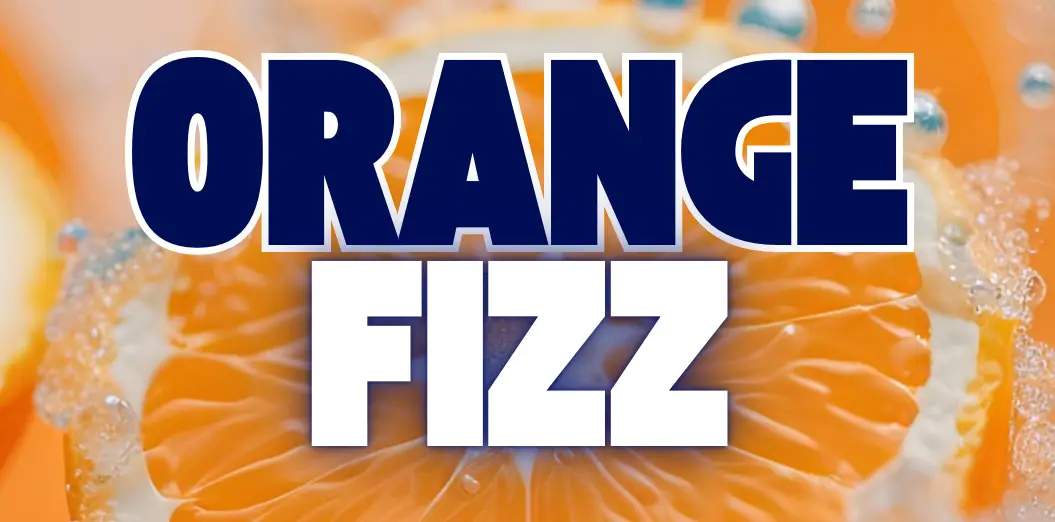
NIL
Arizona athletic department primed to reap benefits of recently approved revenue sharing in college sports
When there’s a weather delay in a college game, whether it be baseball, football or soccer, a countdown starts to when play can resume. But each time lightning is spotted within a certain proximity of the outdoor venue, that clock resets. That’s how it had felt for athletic director Desiree Reed-Francois and her staff as […]

When there’s a weather delay in a college game, whether it be baseball, football or soccer, a countdown starts to when play can resume. But each time lightning is spotted within a certain proximity of the outdoor venue, that clock resets.
That’s how it had felt for athletic director Desiree Reed-Francois and her staff as they sat around waiting for a federal judge to sign off on a landmark settlement that is set to usher in a new era of college athletics.
“We have been preparing for this four months,” Reed-Francois said Saturday while attending Arizona baseball’s Super Regional series at North Carolina. “We’re ready to rock and roll. I’m so excited for that, that we’re actually here.”
Late Friday Judge Claudia Wilken gave formal approval to a settlement negotiated between the NCAA and several parties—House v. NCAA—that, among other things, will allow Division I schools to share up to $20.5 million worth of revenue annually with student-athletes. Those payments can start being issued on July 1. Arizona long ago opted into this settlement and have come up with a formula for how the revenue will be distributed.
Reed-Francois declined to break down the percentage going to each sport, though it’s expected that Arizona (like most schools) will give the vast majority to football with men’s basketball getting the next-highest amount followed by women’s basketball. She said the UA will be one of the few schools including softball in revenue-sharing.
“Whenever you’re implementing something of this magnitude, we know there are going to be bumps along the way, but we are trying to mitigate those risks and those bumps,” she said. “And like we said from the very beginning, we had three priorities when we developed our house implementation strategy: that was to be fair, very competitive and good physical stewards of our resources. So we think our program does that, and we look forward to now all systems are go.”
The settlement also ushers in a set of roster limits for each NCAA sport, along with the ability for schools to fully or partially fund scholarships for every spot. The biggest winner in that respect is baseball, which will go from having only 11.7 scholarships available to as many as 34, but that also means it can’t have more than 34 on the roster after previously having up to 40.
Football goes from 85 scholarships and unlimited walk-ons to a hard cap of 105 players, and men’s and women’s basketball can only have 15 players on the roster. This past season the UA men’s basketball team had 20 players including nine walk-ons.
One issue that had held up the settlement was a proposal to “grandfather” existing student-athletes from roster limits, so as to not have to cut a bunch from certain teams. Schools will have to designate which student-athletes are exempt from roster limits but they’re unlikely to be eligible for revenue sharing.
Additionally, the settlement creates a clearinghouse for all NIL deals separate of revenue sharing, requiring ones worth $600 or more to get approval. That applies to all deals signed as of Saturday, while ones signed before then have to be fully paid out by July 1 or the remaining payments have to get approved.
In theory, this is meant to keep schools from paying a large sum to a player to transfer and dismissing it as an NIL deal. The NIL Go clearinghouse will be administered by the new College Sports Commission, which will also be in charge of any enforcement issues.
“This settlement is progress,” Reed-Francois said. “Is it perfect?”
Reed-Francois believes this will put Arizona on a level playing field with all other D-I schools.
“We are a championship brand,” she said. “We can compete against anyone. We all have the same guidelines. We all have the same cap, $20.5 million, so now let’s take advantage of our natural advantages. Now there are uniform guidelines. That’s why we’re so optimistic. We recognize there’s going to be challenges along the way. This gives us one set standard, and we’ll compete with anyone.”
NIL
Ginnie Graham
Ginnie Graham Teens and preteens shouldn’t be allowed name, image and likeness sports deals because of potential exploitation, harm to small schools, and damage to the spirit of youth and amateur athletics. Then again, NIL deals in Oklahoma high schools are already happening. So instead of trying to reverse course, it’s better just to reform […]



Teens and preteens shouldn’t be allowed name, image and likeness sports deals because of potential exploitation, harm to small schools, and damage to the spirit of youth and amateur athletics.
Then again, NIL deals in Oklahoma high schools are already happening. So instead of trying to reverse course, it’s better just to reform the system.
That’s the summation of the nation’s first Sports Debate City Championship, which was held Wednesday at the University of Tulsa College of Law and featured teams from Tulsa’s Rogers High School and Charles Page High School in Sand Springs.
At the end, I couldn’t choose a winning team. The students were that closely matched. My inclination remains against NIL for teenagers, with mounting frustration that state officials aren’t doing enough to protect kids.
The National Association for Urban Debate Leagues chose the Tulsa Debate League to be the pilot project for expanding into debates devoted to sports topics.
People are also reading…
There’s nothing wrong with the typical high school debate topics. But, honestly, subjects like government exploration of the Arctic, intellectual property rights and the establishment of a comprehensive bilateral trade agreement with the European Union just aren’t as attention-grabbing as NIL.
“Sports is relevant to debate,” said Rhonda Haynes, executive director of NAUDL. “Unfortunately, not a lot of people know about debate. Sports (topics) could create more access and grow an audience, not just for students but adults, as well.”
The Tulsa Debate League remains one of my favorite youth nonprofits. It was founded in 2013 when the only debate team in Tulsa Public Schools was at Booker T. Washington High School. Mostly only private schools could afford debate.
The nonprofit, led by Executive Director Ross Faith, starts and supports programs in public schools. It has a particular knack for finding professionals who are debate alumni and enlisting them as volunteers and donors. The Tulsa Debate League now assists 29 programs in TPS, including at 13 elementary schools, by providing curriculum and volunteers. It hosted 10 debate tournaments during the past school year.
Through these efforts, public school students who never would have learned debate skills now qualify and win state and national awards. They learn how to research and how to argue both sides of an issue. They experience how to disagree respectfully.
“There’s a connection between sports and debate, and that’s competition,” Faith said. “Law is a common pathway for debaters, and there’s a connection between law and sports. Three of the four major league sports commissioners are lawyers. League offices are full of lawyers. So this is among the many pathways there are for debaters.”
The arguments for and against name, image and likeness rights
The debaters came at the NIL topic with research, anecdotes and personal examples. Student Ethan Josefchuk of Rogers High School had been in debate for only a month when he earned a spot in the championship with fellow student Iliel Hurtado Valle.
Josefchuk argued the position in support of NIL benefits at the high school level, calling for “responsible reform.”
“Eliminating NIL is both unrealistic and unfair,” Josefchuk said. “Instead, we advocate for refining the system to make it more equitable and protective of all students.”
The Rogers team likened NIL deals to student actors getting paid for acting gigs or youth cashing in as social media influencers. Their other points: NIL packages incentivize students to participate in sports, and it teaches skills like marketing and financial literacy. They say it would boost school sports over competitive club leagues.
The team acknowledged that inequities exist among schools and various sports, so the goal should be putting in guardrails to close those gaps.
“This is not about whether NIL is perfect. It’s about whether we can improve opportunities,” Hurtado Valle said. “NIL empowers students to earn and grow and stay involved in schools. Let’s not punish ambition. Let’s protect and guide it.”
OK, decent points. I almost changed my mind, but the Sand Spring team came up with good counterpoints on NIL harms to youth.
Recently graduated senior Gracie Gifford, a three-year wrestler and track and field athlete, said NIL deals would only widen inequities, particularly between male and female sports, and erode critical lessons such as teamwork.
“The pursuit of individual NIL deals often overshadows team achievements, which is what high school athletics is all about — growth, amateurism and a competitive environment that prioritizes team success,” Gifford said.
“NIL deals repetitively exclude female athletes. Very few NIL collectives target female athletes because they are looking for what is worth more financially. Unfortunately, we all know that is primarily masculine. There is a clear difference between female wrestlers and male football players in NIL deals.”
Her debate team partner, Braden Fowler, emphasized possible exploitation of youth. Teenagers who lose interest today can quit with little fallout. That could change if big money is on the line. Parents could force their children to keep playing against their will, or NIL donors could exert their influence in toxic ways.
That’s the convincing argument for me. I’ve seen so much bad parental behavior at just the possibility of a kid playing college sports. That’ll be so much worse with NIL.
NIL deals would benefit larger, richer schools with more businesses able to offer lucrative packages, Fowler argued.
“Elite talent is being concentrated in a handful of schools with large fan bases and NIL collectives, leaving smaller fan bases with little hope of recruiting the star players,” he said.
I wasn’t alone in not identifying a clear winner. Veteran debaters and coaches in attendance were reluctant to name the standout team.
“This was an incredibly well-matched debate,” Faith said.
No winner was named because this was a public showcase of the new program. That’s a little ironic, considering this is about sports.
But judges were present to give feedback: Russell Fisher, associate athletic director for compliance at the University of Tulsa; Brentom Todd, deputy chief of staff for the Tulsa Mayor’s Office; and Rick Horrow, chairman of Florida-based Horrow Sports Ventures and the strategic adviser for the sports debate pilot.
“Sports makes debate cool, and debate makes sports more inclusive,” Horrow said. “I’m excited to be part of this program.”
The prevalence of NIL money in Oklahoma high school football
Tulsa World Sports Columnist Bill Haisten previews his story on how much money is being talked about when it comes to the licensing of name, image and likeness of high school football players. After showing up in college football, the contracts are now being signed by high school athletes.
-

 College Sports3 weeks ago
College Sports3 weeks agoPortal Update – Basketball and Gymnastics Take Hits
-

 College Sports3 weeks ago
College Sports3 weeks agoPortal Update – Basketball and Gymnastics Take Hits
-

 Professional Sports3 weeks ago
Professional Sports3 weeks agoJon Jones answers UFC retirement speculation as fans accuse champion of 'holding the belt …
-

 Health3 weeks ago
Health3 weeks agoBYU women's basketball guard injures ACL twice
-

 NIL2 weeks ago
NIL2 weeks ago2025 NCAA Softball Tournament Bracket: Women’s College World Series bracket, schedule set
-

 Youtube3 weeks ago
Youtube3 weeks agoXavier Legette taught Marty Smith his signature celly
-

 High School Sports3 weeks ago
High School Sports3 weeks agoToday in the MHSAA
-

 College Sports3 weeks ago
College Sports3 weeks agoNCDC Commitment Profiles: Cyclones’ Martins Moving On to Saint Anselm College • USPHL
-

 College Sports3 weeks ago
College Sports3 weeks agoIU basketball recruiting
-

 Motorsports2 weeks ago
Motorsports2 weeks agoWhy IHOP Rode With Dale Earnhardt Jr. In Amazon NASCAR Debut
















